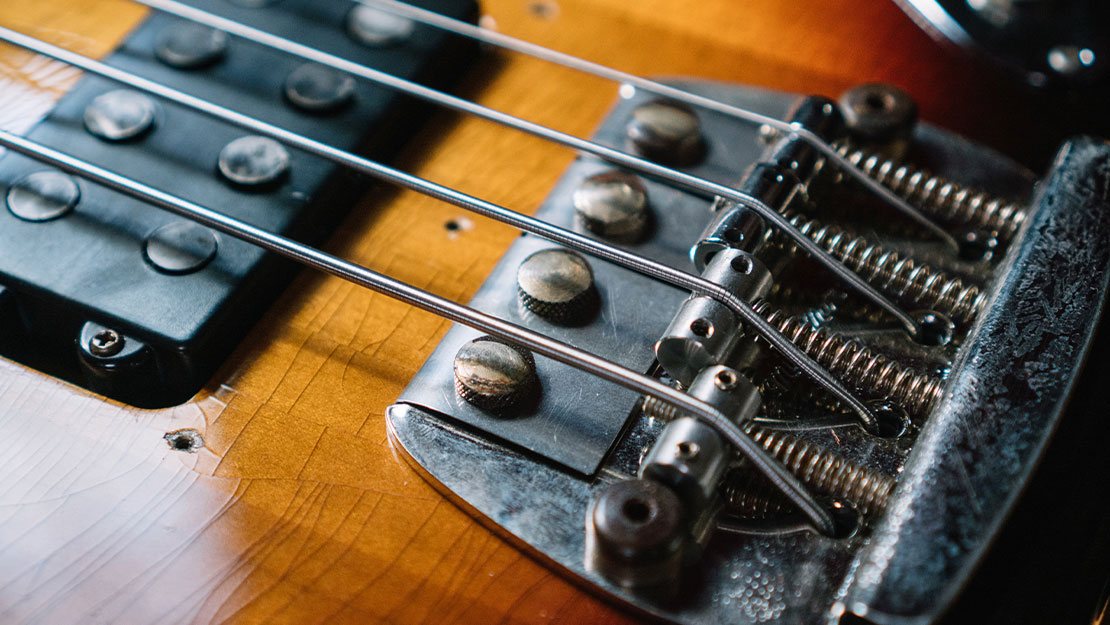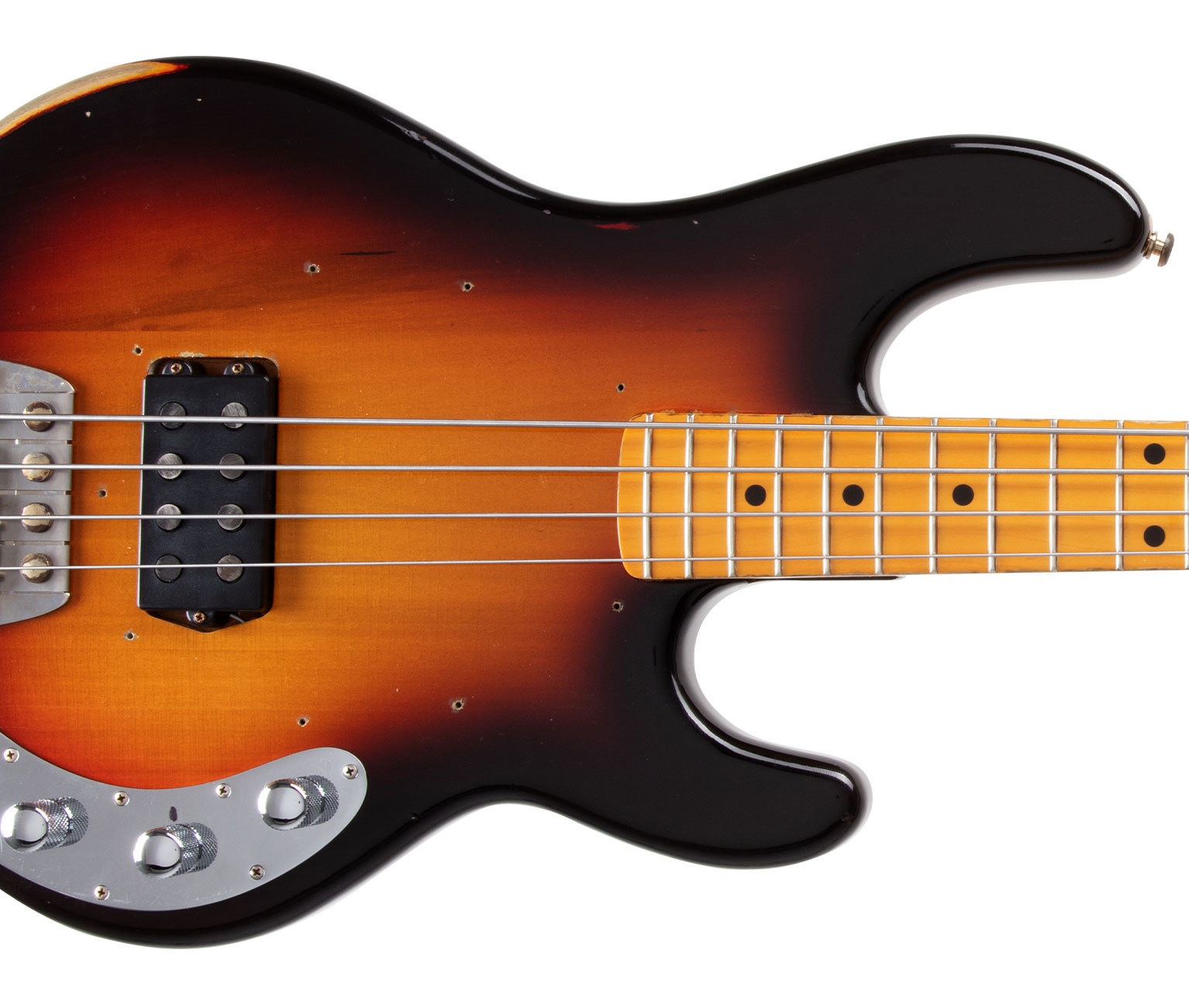-
 México
México


The all-new Cliff Williams Icon Series StingRay Bass is the first in a series of limited handcrafted replicas made to capture the look, sound, and essence of iconic Music Man instruments. Initially dubbed “The #1 Workhorse,” Cliff's 1979 Stingray has been his favorite bass for more than 40 years. Built to the exacting specifications of his original, every detail and characteristic was carefully examined and addressed. Body contours, neck carve, pickup construction, and decades of wear and tear were dutifully replicated by Music Man’s team of master craftsmen. The resulting outcome is a finely crafted period-correct instrument that looks, feels, and sounds just like Cliff’s #1 Stingray bass.
Only 26 available worldwide.
Listen to our podcast episode with Cliff Williams and Ernie Ball Music Man engineer Blair Ridings.







String-through body bridge with stainless steel saddles replicates the classic Stingray design. The original rubber mute pads have been removed per Cliff's set up requirements because you can't mute rock and roll.

String-through body bridge with stainless steel saddles replicates the classic Stingray design. The original rubber mute pads have been removed per Cliff's set up requirements because you can't mute rock and roll.

3-Bolt chrome plated neck attachment with Micro-Tilt provides neck angle adjustment without the need for shims. Firm neck and neck pocket tolerances ensures a tight fit with no shifting.

The 2 band preamp is a hand-soldered circuit board constructed with high-quality components using vintage correct ceramic disc capacitors.


| Especificaciones | Cliff Williams StingRay |
|---|---|
| Modelo | Cliff Williams StingRay |
| Tamaño | 13-1/2" wide x 1-5/8" thick x 44-7/8" long (34.3 cm wide, 4.1 cm thick, 114.0 cm long) |
| Tipo de madera del cuerpo | 3-Piece Trans Poplar |
| Tipo de acabado del cuerpo | Nitrocellulose Lacquer |
| Colores del cuerpo | Back in Burst |
| Fijaciones del cuerpo | N/A |
| Puente | Pre-EB Geometry Music Man® chrome plated, steel bridge plate with vintage stainless steel saddles |
| Pickguard | N/A |
| Escala de longitud | 34" (86.4 cm) |
| Radio del cuello | 7.5" (19.1 cm) |
| Tamaño del cabezal | 8-3/4" (22.2 cm) long |
| Trastes | 21 - Low profile, wide |
| Ancho de cuello | 2-1/2" (63.5 mm) |
| Madera del cuello | Select maple neck |
| Diapasón | Natural aged light yellow finish |
| Indicador de los trastes | 5/16" Dot Inlay |
| Acabado del cuello | Nitrocellulose Lacquer |
| Color del cuello | Natural aged light yellow finish |
| Filete del cuello | N/A |
| Afinador | Schaller BM, with tapered string posts |
| Unión del cuello | 3 Bolt, Pre EB Music Man Design with Micro-Tilt Neck Shim Adjustment |
| Blindaje electrónico | Chrome plated brass control cover & Copper Insulating Tape in Control Cavity |
| Controles | Custom 2-band active preamp; vol, treble, bass |
| Pastillas | Custom humbucking with 8 elongated Alnico magnets |
| Zurdo | No |
| Cuerdas | 50w-70w-85w-105w (Group II Flatwound #2804) |
id => 93
iid => 93
enabled => 1
header_1 =>
header_2 =>
wiring_image => 0
created_at => 2020-11-11 14:59:18
updated_at => 2020-11-11 14:59:18
| Especificaciones | Cliff Williams StingRay | |
|---|---|---|
| Model | Cliff Williams StingRay | |
| Order | 0 | |
| Size | 13-1/2" wide x 1-5/8" thick x 44-7/8" long (34.3 cm wide, 4.1 cm thick, 114.0 cm long) | |
| Body Wood | 3-Piece Trans Poplar | |
| Body Finish | Nitrocellulose Lacquer | |
| Body Colors | Back in Burst | |
| Body Bindings | N/A | |
| Bridge | Pre-EB Geometry Music Man® chrome plated, steel bridge plate with vintage stainless steel saddles | |
| Pickguard | N/A | |
| Scale Length | 34" (86.4 cm) | |
| Neck Radius | 7.5" (19.1 cm) | |
| Headstock Size | 8-3/4" (22.2 cm) long | |
| Frets | 21 - Low profile, wide | |
| Neck Width | 2-1/2" (63.5 mm) | |
| Neck Wood | Select maple neck | |
| Fingerboard | Natural aged light yellow finish | |
| Fret Markers | 5/16" Dot Inlay | |
| Neck Finish | Nitrocellulose Lacquer | |
| Neck Colors | Natural aged light yellow finish | |
| Neck Binding | N/A | |
| Tuning Machines | Schaller BM, with tapered string posts | |
| Truss Rod | ||
| Neck Attachment | 3 Bolt, Pre EB Music Man Design with Micro-Tilt Neck Shim Adjustment | |
| Electronic Shielding | Chrome plated brass control cover & Copper Insulating Tape in Control Cavity | |
| Controls | Custom 2-band active preamp; vol, treble, bass | |
| Switching | ||
| Pickups | Custom humbucking with 8 elongated Alnico magnets | |
| Left Handed | No | |
| Strings | 50w-70w-85w-105w (Group II Flatwound #2804) |